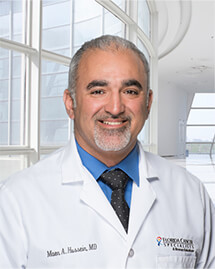Long-Term Outcomes of TROG 13.01 SAFRON II Randomized Trial of Single- Versus Multifraction Stereotactic Ablative Body Radiotherapy for Pulmonary Oligometastases
ABSTRACT
Clinical trials frequently include multiple end points that mature at different times. The initial report, typically based on the primary end point, may be published when key planned co-primary or secondary analyses are not yet available. Clinical Trial Updates provide an opportunity to disseminate additional results from studies, published in JCO or elsewhere, for which the primary end point has already been reported.
In a randomized phase II clinical trial, the Trans Tasman Radiation Oncology Group compared single- versus multifraction stereotactic ablative body radiotherapy (SABR) in 90 patients with 133 oligometastases to the lung. The study found no differences in safety, efficacy, systemic immunogenicity, or survival between arms, with single-fraction SABR picked as the winner on the basis of cost-effectiveness. In this article, we report the final updated survival outcome analysis. The protocol mandated no concurrent or post-therapy systemic therapy until progression. Modified disease-free survival (mDFS) was defined as any progression not addressable by local therapy, or death. At a median follow-up of 5.4 years, the 3- and 5-year estimates for overall survival (OS) were 70% (95% CI, 59 to 78) and 51% (95% CI, 39 to 61). There were no significant differences between the multi- and single-fraction arms for OS (hazard ratio [HR], 1.1 [95% CI, 0.6 to 2.0]; P = .81). The 3- and 5-year estimates for disease-free survival were 24% (95% CI, 16 to 33) and 20% (95% CI, 13 to 29), with no differences between arms (HR, 1.0 [95% CI, 0.6 to 1.6]; P = .92). The 3- and 5-year estimates for mDFS were 39% (95% CI, 29 to 49) and 34% (95% CI, 24 to 44), with no differences between arms (HR, 1.0 [95% CI, 0.6 to 1.8]; P = .90). In this patient population, where patients receive SABR in lieu of systemic therapy, one-in-three patients are alive without disease in the long term. There were no differences in outcomes by fractionation schedule.
